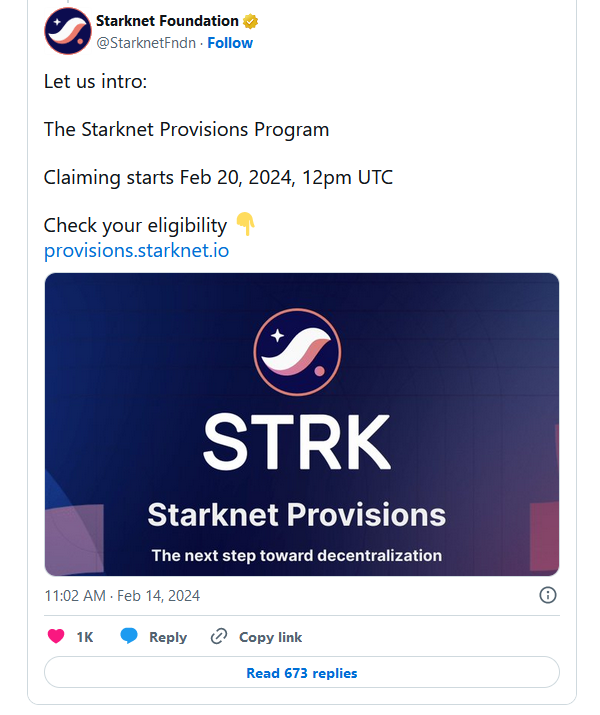Binance will list the Starknet native token on February 20
In addition, the exchange will support STRK’s distribution plan for ETH staking users

20.02.2024 - 11:35
309
2 min
0
What’s new? Crypto exchange Binance will list the native token of the Starknet blockchain. The STRK asset will be added to the platform on February 20 at 13:00 UTC with a Seed Tag, which is assigned to new projects and warns of possible high volatility. STRK trading will be available in pairs with USDT and FDUSD stablecoins, bitcoin, and the Turkish lira. Withdrawal of the coin will be available on February 21 at 13:00 UTC.
What else is known? In addition, Binance Earn will support STRK’s distribution plan for ETH staking users on the platform. Customers will receive STRK to spot wallets based on their total BETH balance at the time of the snapshot on September 14, 2022, at 23:59 UTC. The distribution of tokens to eligible users will be finalized within 30 days of the official distribution date set by the Starknet Foundation.
Starknet is a Layer 2 (L2) network based on the Ethereum blockchain, launched in November 2021. It provides faster transaction processing speeds and low fees. The project is a ZK-Rollup, it is a scaling solution for the mainnet that utilizes zero-disclosure proof technology. Starknet combines multiple transactions into a single packet and transmits it to the mainnet for validation.
In early October, STRK’s first unlocking was pushed back to April 2024. The total supply is 10 billion coins, the asset is currently not traded on exchanges. In October 2023, Starknet distributed 50 million STRK to early adopters of the network.
Earlier this month, it was revealed that the Starknet Foundation will airdrop over 700 million native tokens STRK among 1.3 million addresses on February 20. According to the foundation, several categories of users can claim the coins before June 20.
Useful material?
Trends
As of January 21, the capitalization of this sector of the crypto market exceeds $519 billion
Jan 21, 2025
Market
The platform generated $9,5 million in revenue during the same time
Jan 20, 2025
Market
Shares of the Trust are designed to track the market price of XRP with fewer fees and expenses
Jan 17, 2025
Market
The asset will allow USDT to move seamlessly between different blockchains
Jan 17, 2025
Market
Earlier, the community criticized the project for its lack of transparency, which led to a sharp drop in the HYPE token price
Jan 8, 2025
Market
Rising US Treasury bond yields are negatively affecting risk assets
Jan 8, 2025










 Telegram
Telegram  Twitter
Twitter